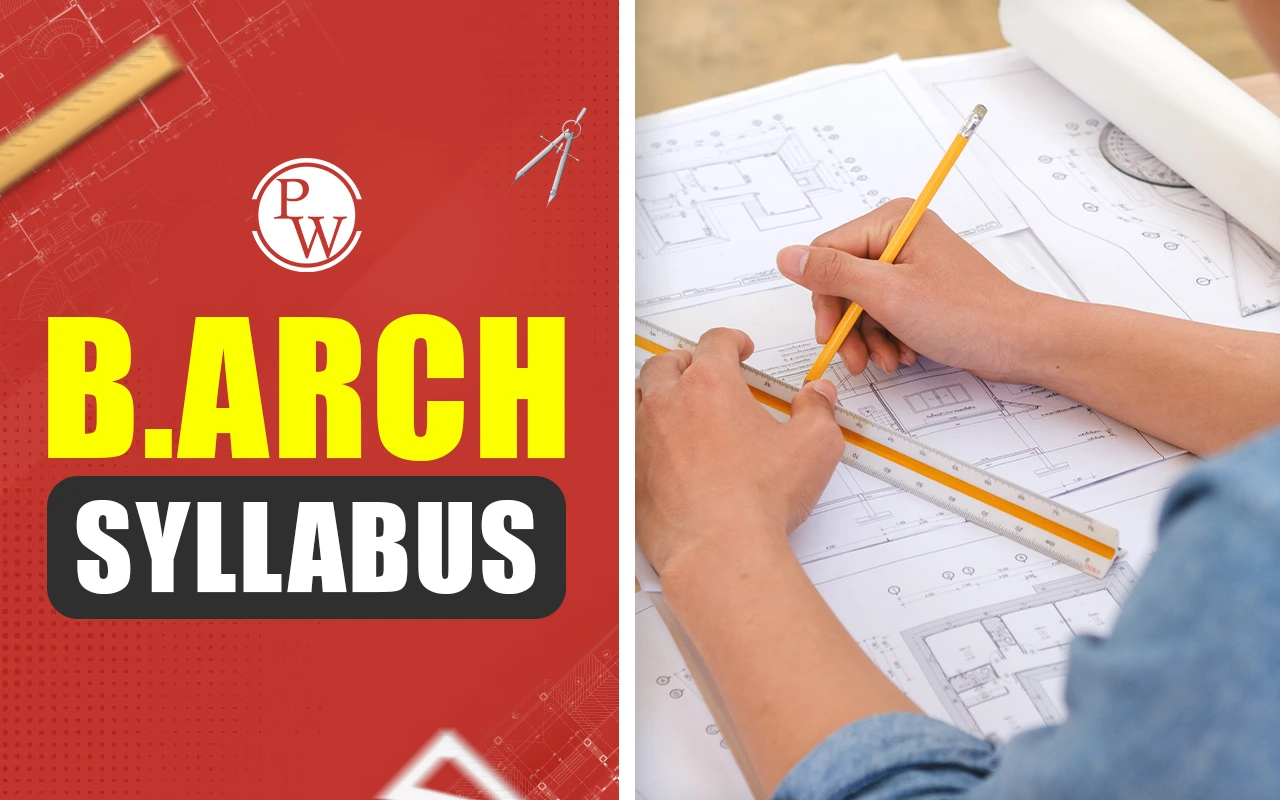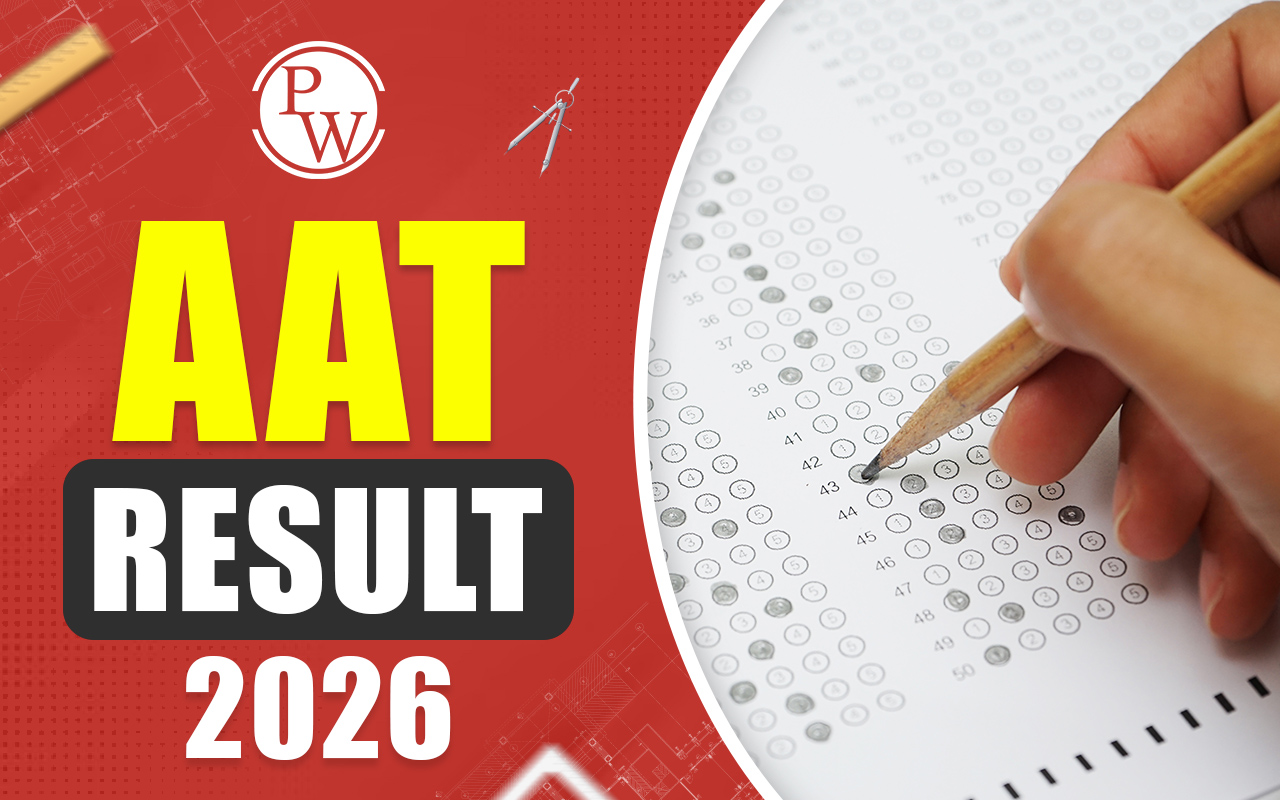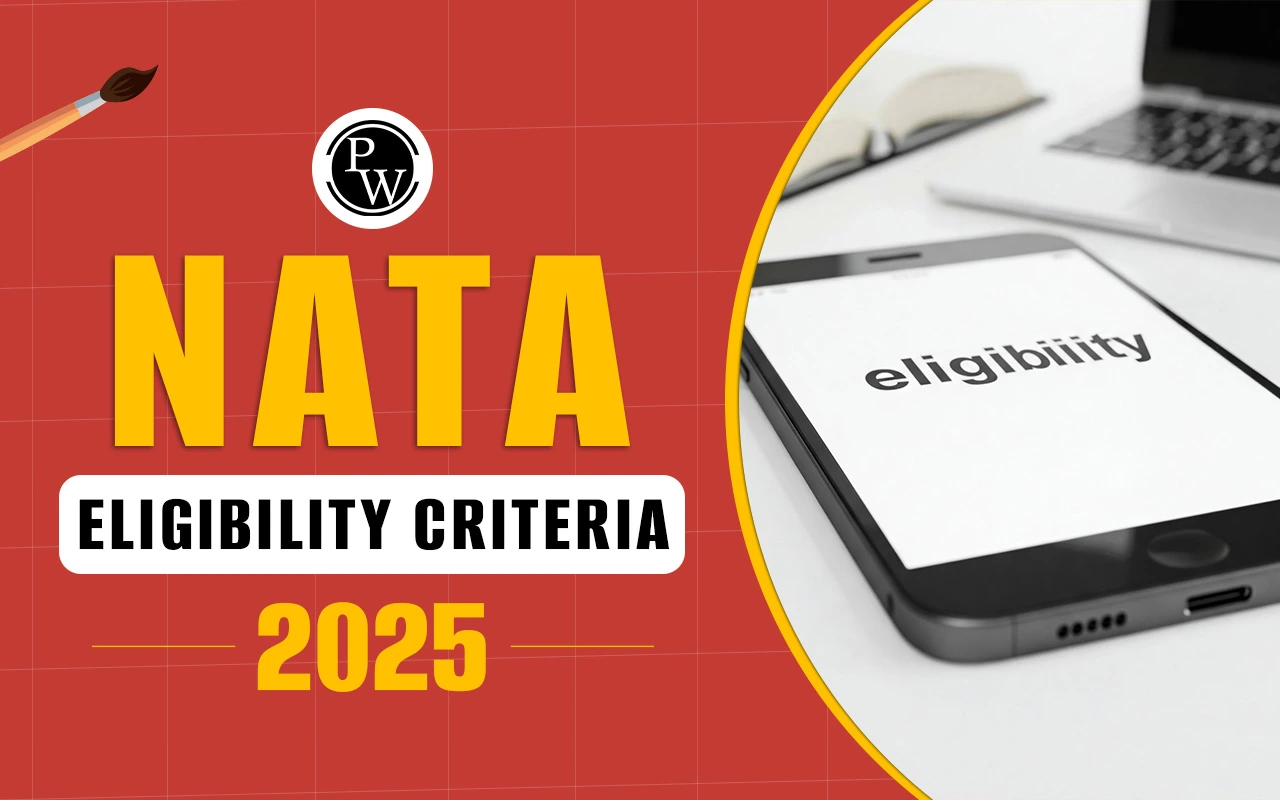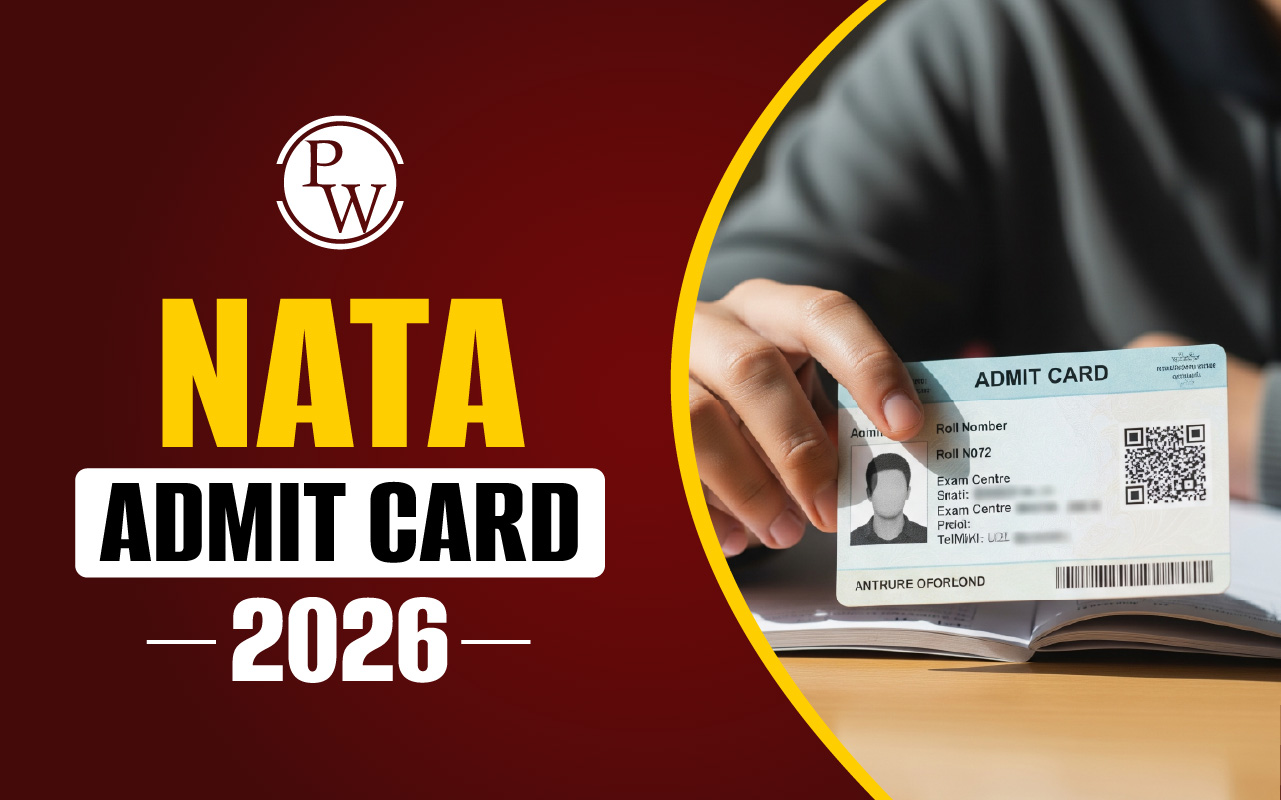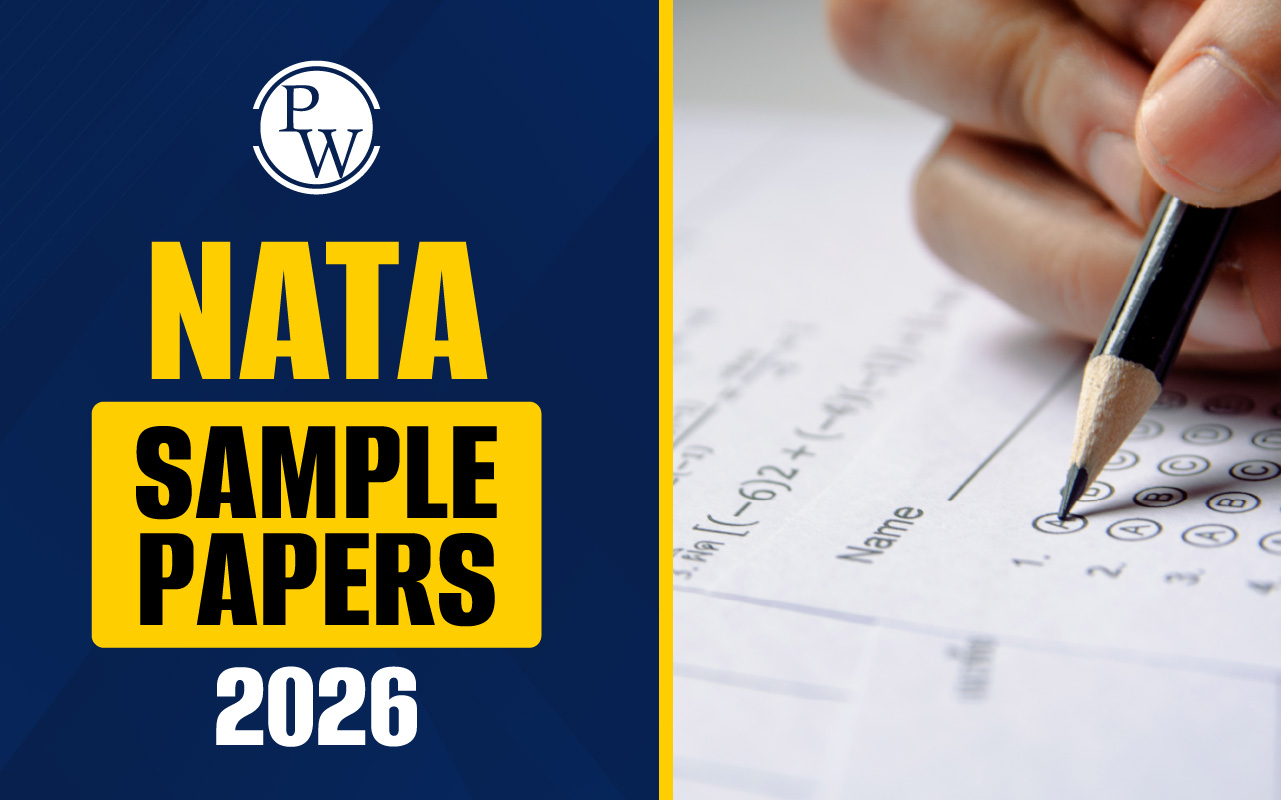
NATA Syllabus 2026: The Council of Architecture (CoA) will release the NATA syllabus 2026 along with the official notification on the official website at nata.in. The NATA syllabus 2026 gives insights into the topics and sections covered in the NATA exam 2026. These sections include Mathematics, General Aptitude, Drawing, Physics, and Chemistry.
The NATA entrance exam tests candidates based on their aesthetic sensitivity, understanding of architectural concepts, building materials, visual perception, and design principles. Familiarity with the NATA syllabus 2026 helps candidates to streamline their preparation according to the important areas and optimize their study time. NATA entrance exam 2026 will be conducted on every Friday and Saturday from March to July 2026, tentatively.
NATA Syllabus 2026 Overview
NATA syllabus 2026 provides a framework of topics that assess candidate's aptitude for architecture through both creative and analytical skills. It consists of two main sections, namely the Drawing and Composition test and the computer-based test. The drawing test focuses on visual and design abilities, while the CBT test assesses general aptitude, logical reasoning, mathematics, and architectural awareness. 2D and 3D compositions, pattern recognition, quantitative aptitude, and design sensitivity are also part of the NATA syllabus 2026. Get an overview of the NATA syllabus 2026 from the following table.
| NATA Syllabus 2026 Overview | |
| Aptitude Techniques | Explanation |
| Diagrammatic Reasoning | This section of the NATA exam assesses how well you can think logically and solve problems using visual information and real-life scenarios. |
| Numerical Reasoning | Tests your basic math skills through simple problems. |
| Verbal Reasoning | Evaluate your verbal logical skills. |
| Inductive Reasoning | Analyse the given data and break it down to see patterns. |
| Situational Judgment | Designed to see how you approach and solve different kinds of problems. |
| Logical Reasoning | Identifies patterns, sequences, or connections between different shapes and images. |
| Abstract Reasoning | Ability to think beyond the obvious and understand ideas that aren’t tied to concrete facts or specific examples. |
Subject-Wise NATA Syllabus 2026
The subject-wise NATA syllabus 2026 gives details of the important topics covered in the NATA Math syllabus, NATA General Aptitude syllabus, Physics, and Chemistry. This ensures a balanced assessment of both creative ability and analytical thinking. Common topics that are asked in the NATA syllabus 2026 are mentioned in the following tables.
NATA Math Syllabus
The NATA Maths syllabus covers both fundamental concepts and their practical applications. Candidates are required to solve equations based on geometric concepts and data patterns. The NATA Maths syllabus evaluates candidates’ mathematical understanding and problem-solving skills essential for architecture. The following table mentions key topics included in the NATA Maths syllabus.
| NATA Math Syllabus | |
| Units | Topics Covered |
| Algebra |
|
| Logarithms |
|
| Matrices |
|
| Trigonometry |
|
| Coordinate Geometry |
|
| 3-dimensional coordinate geometry |
|
| Theory of calculus |
|
| Application of calculus |
|
| Permutation & Combination |
|
| Statistics & Probability |
|
NATA General Aptitude Syllabus
The NATA General Aptitude syllabus includes topics such as diagrammatic reasoning, inductive reasoning, and situational judgment. Candidates are tested on their understanding of patterns, sequences, and relationships between shapes and images. Refer to the following table to get an insight into the important topics of the NATA General Aptitude Syllabus.
| NATA General Aptitude Syllabus | |
| Units | Topics Covered |
| General |
|
| Mathematical Reasoning |
|
| Sets & Relations |
|
NATA Drawing Syllabus
NATA drawing syllabus covers areas of 2D and 3D compositions, sketching urban and natural, color, texture, harmony, contrast, perspective drawing, and landscapes. Candidates must have visual and design abilities for architecture. Check out the following table for the detailed NATA Drawing Syllabus.
| NATA Drawing Syllabus | |
| Unit | Syllabus |
| Drawing |
|
NATA Physics and Chemistry Syllabus
Both the Physics and Chemistry syllabi for the NATA exam 2026 include key topics that provide a scientific foundation relevant to architecture. For NATA Physics, electrostatics, current electricity, magnetism, optics, atomic structure, etc, are frequently asked.
The Chemistry syllabus focuses on basic concepts like atomic structure, chemical bonding, states of matter, thermodynamics, equilibrium, and environmental chemistry. Here is the detailed syllabus for both the NATA Physics and Chemistry syllabi.
| NATA Physics and Chemistry Syllabus | |
| Subject | Syllabus |
| Physics |
|
| Chemistry |
|
NATA Preparation Tips 2026
Here are some preparation tips for the NATA exam 2026.
- Start your preparation by thoroughly analysing and understanding the NATA syllabus and exam pattern 2026. Segregate topics of high importance and allocate enough time to them.
- Practice drawing skills such as freehand straight lines, 2D/3D composition, perspective sketches, and urban/natural landscapes.
- Solve questions on general aptitude and mathematics. Revise basic formulas and practice problems on number series, ratios, logical reasoning, and geometry.
- Stay updated on architectural awareness and current design trends. Know about the famous architects, styles, materials, and construction technologies.
- Attempt mock tests and solve NATA sample papers to get acquainted with the exam pattern.
- Select suitable NATA 2026 preparation books that align with the syllabus and give detailed information on every topic.
NATA 2026 Preparation Books
The NATA 2026 preparation books are important resources that complete syllabus, including drawing, mathematics, general aptitude, and architectural awareness. With a wide range of NATA 2026 preparation books now available, candidates must choose those that best serve their purpose. Some of these books are given below. Candidates can click on the link and order these books.
| NATA 2025 Preparation Books | |
| Books | Link |
| Design & Architecture Modules and 6 Previous Years' Solved Papers (2015 - 2020) Combo Set of 9 Books For Exams 2026 | Click Here |
| Design & Architecture 6 Previous Years' Solved Papers (2015 - 2020) | Click Here |
| Complete Logical Reasoning Module Set of 2 For Design & Architecture Exams 2026 Latest Edition | NIFT, NID, UCEED, NATA, JEE Mains Paper 2, JEE AAT | Click Here |
| Complete Mathematics Module Set of 2 For Design & Architecture Exams 2026 Latest Edition | NIFT, NID, UCEED, NATA, JEE Mains Paper 2, JEE AAT | Click Here |
| Complete Drawing Module Set of 2 For Design & Architecture Exams 2026 Latest Edition | NIFT, NID, UCEED, NATA, JEE Mains Paper 2, JEE AAT | Click Here |
| Design & Architecture Modules and 25 Previous Years' Solved Papers (2015 - 2024) Combo Set of 9 Books For Exams 2026 | Click Here |
NATA Syllabus 2026 FAQs
Which subjects are included in the NATA syllabus 2026?
NATA syllabus 2026 includes subjects such as Drawing and Composition, General Aptitude (logical, verbal, inductive, diagrammatic, numerical reasoning), Physics, Chemistry, Mathematics (algebra, trigonometry, coordinate geometry, calculus, statistics, matrices), and Architecture awareness.
What does the NATA General Aptitude section cover?
The NATA General Aptitude section covers areas of aesthetic sensitivity, logical and critical thinking, diagrammatic reasoning, pattern recognition, observational skills, visual perception, and situational judgment on architecture.
What topics are included in the NATA Maths Syllabus?
NATA Maths syllabus includes topics such as statistics, probability, coordinate and 3D geometry, algebra, trigonometry, calculus, permutation, and combination. These focus on mathematical concepts and their practical applications.
Will there be a separate drawing test for NATA 2026?
What will be the exam duration for NATA 2026?

